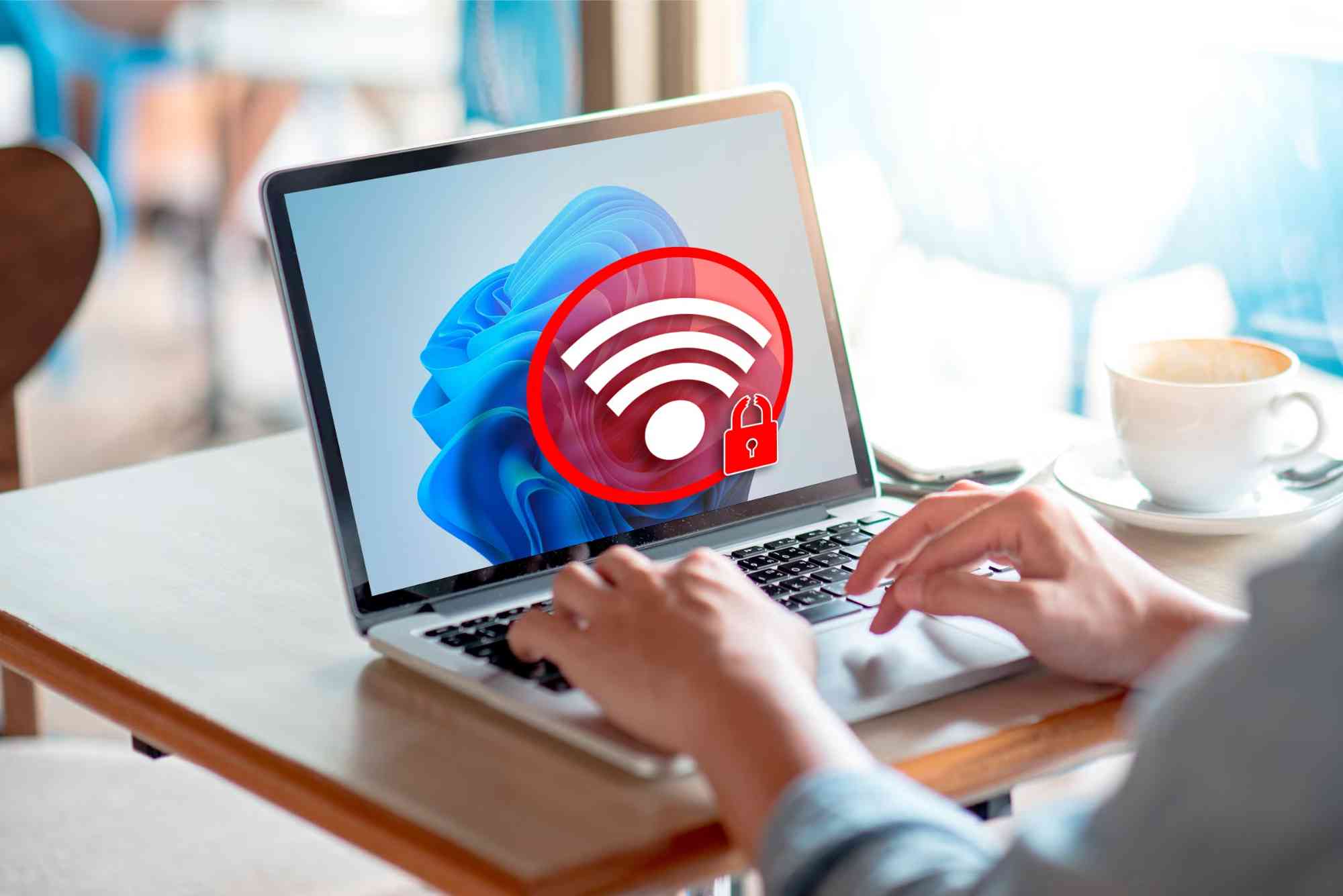Introduction
If your Wi-Fi suddenly stops working or shows “Limited Connection” after a Windows update, you’re not alone. Many users experience this frustrating issue where the internet works perfectly before an update but breaks right after rebooting. In this detailed guide, you’ll learn how to fix limited Wi-Fi connection after Windows update quickly and effectively without needing advanced technical skills. Whether it’s a driver conflict, DNS issue, or misconfigured settings, the steps below will help you get back online in no time.
When Microsoft rolls out updates, they often include network driver or security changes that can conflict with your existing Wi-Fi adapter or network configuration. The good news is that most of these problems can be resolved with simple troubleshooting techniques. Let’s explore what causes limited Wi-Fi connectivity and how to fix it step by step.
Understanding the “Limited Wi-Fi Connection” Issue
The “Limited Connection” message appears when Windows detects a problem that prevents your computer from connecting to the internet, even though it can still detect the router. This usually means your device is connected to Wi-Fi but cannot access the web because of network or IP configuration issues.
Common causes include:
-
Outdated or incompatible network drivers after a Windows update.
-
Corrupted TCP/IP stack or DNS cache.
-
Misconfigured network settings or DHCP problems.
-
Conflicts caused by antivirus or firewall software.
-
Router or modem errors triggered after system updates.
Now that you know what triggers the problem, let’s move toward proven methods to fix it.
Restart Your Devices
The simplest fix is often the most effective. Restart both your PC and Wi-Fi router.
When you reboot your computer, it clears temporary caches and resets network configurations. Likewise, restarting your router helps reassign a proper IP address. After restarting, check if the Wi-Fi connection returns to normal.
Update or Reinstall Your Wi-Fi Driver
One of the most common reasons for limited Wi-Fi connectivity after a Windows update is an outdated or incompatible Wi-Fi driver.
To update it:
-
Press Windows + X and select Device Manager.
-
Expand Network Adapters and right-click on your Wi-Fi adapter.
-
Choose Update driver, then Search automatically for drivers.
If that doesn’t work, uninstall the driver and reinstall it:
-
In Device Manager, right-click your Wi-Fi adapter.
-
Select Uninstall device.
-
Restart your computer, and Windows will reinstall the correct driver automatically.
You can also visit your laptop manufacturer’s official website and download the latest Wi-Fi driver compatible with your Windows version.
Reset TCP/IP Stack and DNS Cache
Network stack corruption often occurs after system updates, leading to limited connectivity. You can fix this using Command Prompt.
-
Type cmd in the search box and select Run as administrator.
-
Enter the following commands one by one:
netsh int ip reset
netsh winsock reset
ipconfig /release
ipconfig /renew
ipconfig /flushdns
-
Restart your computer once the commands are executed.
These commands reset your network settings, clear DNS cache, and request a new IP address from your router.
Change Power Management Settings
Windows updates sometimes modify your system’s power management options, which can disable the Wi-Fi adapter to save power.
-
Open Device Manager.
-
Find your Wi-Fi adapter, right-click, and select Properties.
-
Go to the Power Management tab.
-
Uncheck Allow the computer to turn off this device to save power.
-
Click OK and restart your system.
This ensures your adapter stays active and maintains a stable Wi-Fi connection.
Disable and Re-enable the Network Adapter
Sometimes your adapter simply needs to be reset.
-
Press Windows + R, type
ncpa.cpl, and hit Enter. -
Right-click your Wi-Fi network and choose Disable.
-
Wait a few seconds, then right-click again and select Enable.
This simple step refreshes your network adapter and often restores internet access.
Check for IP Address Conflicts
If multiple devices on your network share the same IP address, Windows might show a limited connection error. You can fix this by switching to automatic IP assignment.
-
Open Network Connections (via
ncpa.cpl). -
Right-click your Wi-Fi and select Properties.
-
Double-click Internet Protocol Version 4 (TCP/IPv4).
-
Choose Obtain an IP address automatically and Obtain DNS server address automatically.
-
Click OK to save changes.
Afterward, restart your computer and reconnect to your Wi-Fi.
Temporarily Disable Firewall or Antivirus
Security programs sometimes interfere with network connectivity after a Windows update. Temporarily disable your firewall or antivirus and check if your Wi-Fi starts working.
If the issue resolves, re-enable your protection and create a network exception within your antivirus settings to avoid future conflicts.
Reinstall Network Adapter Using Command Prompt
If nothing works, you can reinstall the network adapter completely through Command Prompt.
-
Open Command Prompt (Admin).
-
Type:
netcfg –d
-
Press Enter and restart your system.
This command reinstalls all network adapters and resets configurations to default, often resolving persistent Wi-Fi issues.
Modify DNS Settings for Better Connectivity
Sometimes, Windows updates change your DNS configuration, leading to slow or limited connections. You can manually set reliable public DNS servers.
-
Open Network Connections.
-
Right-click your Wi-Fi network → Properties.
-
Select Internet Protocol Version 4 (TCP/IPv4) → Properties.
-
Choose Use the following DNS server addresses:
-
Preferred DNS: 8.8.8.8
-
Alternate DNS: 8.8.4.4
-
-
Save changes and restart your connection.
This sets Google’s DNS servers, known for stability and speed.
Run Windows Network Troubleshooter
Windows includes a built-in tool that automatically detects and fixes common Wi-Fi issues.
-
Go to Settings → Network & Internet → Status.
-
Click Network Troubleshooter.
-
Follow the on-screen instructions.
While it doesn’t always solve every problem, it’s worth trying as a first diagnostic step.
Roll Back the Problematic Windows Update
If all else fails, the update itself might be the cause. You can roll back to the previous version:
-
Go to Settings → Update & Security → Windows Update.
-
Click View update history.
-
Choose Uninstall updates.
-
Select the recent update that triggered the issue and uninstall it.
Once rolled back, pause updates temporarily until Microsoft releases a fix.
Use Ethernet Connection Temporarily
If Wi-Fi remains unstable, connect your computer directly to the router with an Ethernet cable. This ensures stable internet while troubleshooting and helps download necessary drivers or updates to fix your Wi-Fi.
Contact Your Internet Service Provider
If none of the above methods resolve your issue, the problem might not be with your computer but with your ISP’s configuration. Contact your internet provider for support or diagnostic help. If you’re in Pakistan, Dhanote Internet Services provides reliable internet solutions and can assist in troubleshooting persistent network issues quickly.
FAQs
Why does my Wi-Fi show limited connection after a Windows update?
This usually happens due to outdated drivers, corrupted network settings, or DNS issues caused by Windows updates.
How can I fix Wi-Fi limited connection without reinstalling Windows?
You can reset TCP/IP settings, update drivers, or change DNS manually to fix limited connectivity without reinstalling Windows.
Does resetting my router fix limited Wi-Fi connection?
Yes, if the issue lies with your router’s IP assignment or firmware, resetting can resolve the problem.
Can antivirus software cause limited connection errors?
Yes, some antivirus or firewall tools may block network traffic after updates, leading to limited connectivity.
Is it safe to roll back a Windows update?
Yes, it’s safe if the update caused major issues. Windows provides an option to uninstall recent updates easily.
Experiencing a limited Wi-Fi connection after a Windows update can be frustrating, but with the right troubleshooting approach, it’s entirely fixable. From updating drivers and resetting network stacks to adjusting DNS and firewall settings, these proven methods can restore your connection quickly. Always remember to back up your drivers before major Windows updates and keep your network software current to prevent future issues.
If your internet still doesn’t work as expected, it might be time to consult professionals or switch to a reliable provider like Dhanote Internet Services, known for consistent connectivity and expert support. Stay connected, stay productive — and never let a Windows update disconnect you again.








